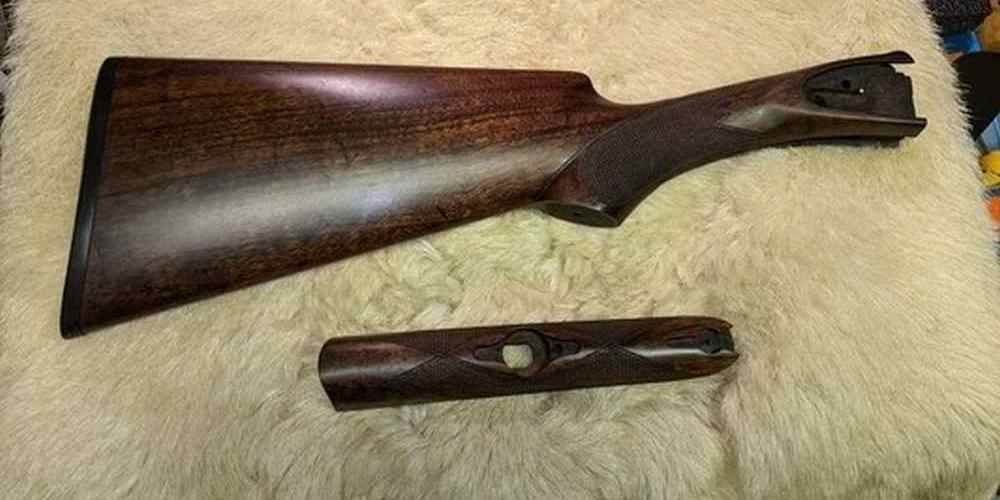“Fix Common Shotgun Issues Quickly and Easily – DIY Troubleshooting Tips for a Smooth Shot!”
How to Diagnose and Fix Common Shotgun Issues: A Step-by-Step Guide
1. Check the Ammunition: The first step in diagnosing and fixing common shotgun issues is to check the ammunition. Make sure the ammunition is the correct size and type for the shotgun. If the ammunition is not the correct size or type, it can cause a variety of issues, including misfires, jams, and other malfunctions.
2. Check the Barrel: Inspect the barrel of the shotgun for any obstructions or damage. If there is an obstruction, such as a stuck shell or a foreign object, remove it. If the barrel is damaged, it should be replaced.
3. Check the Action: Inspect the action of the shotgun for any signs of wear or damage. If the action is worn or damaged, it should be replaced.
4. Check the Trigger: Inspect the trigger of the shotgun for any signs of wear or damage. If the trigger is worn or damaged, it should be replaced.
5. Check the Safety: Inspect the safety of the shotgun for any signs of wear or damage. If the safety is worn or damaged, it should be replaced.
6. Check the Stock: Inspect the stock of the shotgun for any signs of wear or damage. If the stock is worn or damaged, it should be replaced.
7. Clean and Lubricate: Clean and lubricate all of the moving parts of the shotgun. This will help ensure that the shotgun is functioning properly and will help prevent future issues.
8. Test Fire: Once all of the above steps have been completed, test fire the shotgun to make sure it is functioning properly. If the shotgun is still not functioning properly, further diagnosis and repair may be necessary.

Following these steps should help diagnose and fix most common shotgun issues. If the issue persists, it is recommended that the shotgun be taken to a qualified gunsmith for further diagnosis and repair.
The Most Common Shotgun Problems and How to Fix Them
Shotguns are a popular choice for hunting and sport shooting, but they can be prone to certain problems. Knowing how to identify and fix the most common shotgun problems can help you keep your gun in top condition.
Misfires: A misfire is when the gun fails to fire after the trigger is pulled. This can be caused by a number of issues, including a faulty firing pin, a dirty chamber, or a weak firing spring. To fix a misfire, first check the firing pin to make sure it is not broken or worn. If it is, replace it. Next, clean the chamber and make sure it is free of dirt and debris. Finally, check the firing spring and replace it if it is weak or worn.
Jamming: Jamming occurs when the gun fails to eject the spent shell after firing. This can be caused by a weak or worn ejector spring, a dirty chamber, or a faulty extractor. To fix a jam, first check the ejector spring and replace it if it is weak or worn. Next, clean the chamber and make sure it is free of dirt and debris. Finally, check the extractor and replace it if it is faulty.
Fouling: Fouling is when the gun becomes clogged with residue from firing. This can be caused by a dirty barrel, a dirty chamber, or a dirty firing pin. To fix fouling, first clean the barrel and chamber with a bore snake or a cleaning rod and patch. Next, clean the firing pin with a cotton swab and gun oil. Finally, lubricate the gun with a light gun oil to prevent future fouling.
These are the most common shotgun problems and how to fix them. With regular maintenance and cleaning, you can keep your shotgun in top condition and ensure it is always ready for use.
Essential Tools and Techniques for DIY Shotgun Repairs and Maintenance
Shotgun repairs and maintenance are essential for ensuring the safe and reliable operation of your firearm. DIY shotgun repairs and maintenance can be a rewarding and cost-effective way to keep your shotgun in top condition. To ensure successful repairs and maintenance, it is important to have the right tools and techniques.
Tools
The most important tool for DIY shotgun repairs and maintenance is a good set of screwdrivers. A good set of screwdrivers should include flat-head, Phillips-head, and Torx-head screwdrivers in a variety of sizes. Additionally, a set of needle-nose pliers, a pair of wire cutters, and a set of Allen wrenches may be necessary for certain repairs.
For cleaning and lubrication, a good gun cleaning kit is essential. A gun cleaning kit should include a cleaning rod, cleaning patches, cleaning brushes, and cleaning solvents. Additionally, a good lubricant such as gun oil or grease should be used to lubricate moving parts.
Techniques
When performing DIY shotgun repairs and maintenance, it is important to follow the manufacturer’s instructions. If the instructions are not available, it is important to research the specific model of shotgun to ensure that the correct parts and techniques are used.
When disassembling the shotgun, it is important to take note of the order in which the parts are removed. This will make it easier to reassemble the shotgun correctly. Additionally, it is important to keep track of any small parts that may be removed during the disassembly process.
When cleaning the shotgun, it is important to use the correct cleaning solvents and lubricants. It is also important to ensure that all parts are thoroughly cleaned and lubricated.
When reassembling the shotgun, it is important to ensure that all parts are properly aligned and tightened. Additionally, it is important to ensure that all safety features are functioning correctly.
By following these essential tools and techniques, DIY shotgun repairs and maintenance can be a rewarding and cost-effective way to keep your shotgun in top condition.





